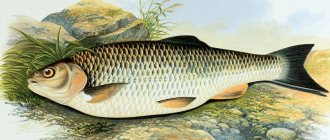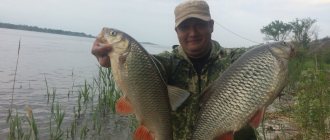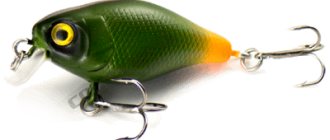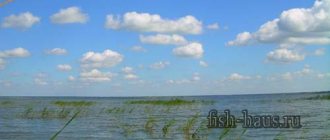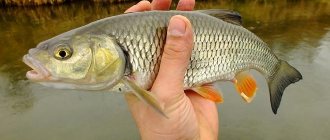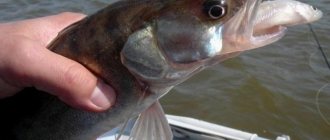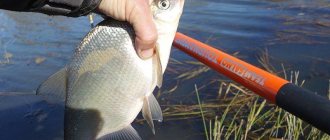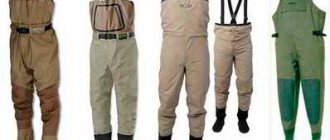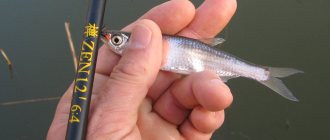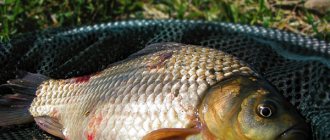About the chub
The chub belongs to the carp family. It can grow up to 80 cm in length, weighing about 8 kg. As a rule, anglers catch chub weighing no more than 1 kg, although larger specimens are also found. This fish lives from 15 to 18 years. Prefers rivers with clean, cold water and fast currents. A rocky-pebble bottom and many riffles are a must. Like most fish species, the chub is a shy and cautious fish. To catch him, you need to be well camouflaged. Some fishermen catch chub on a spinning rod using various artificial baits, and some fish on a regular float rod using traditional baits. Since there are many more fishing enthusiasts, this article will talk about how to catch this fish on a float.
Artificial origin
Wobblers for chub are considered the most effective, efficient and popular artificial baits. The advantages of the designs are accessibility, ease of operation, possibility of use in any environment and resemblance to real fish.
Read more
What to feed carp with?
There is a rating of the best models of wobblers, among which the leading positions are occupied by Jackall Br Chubby 38F/Diving Chubby 38F, Smith Camion 32F and Zip Baits Rigge 35 (Deep). All of them are floating types, have minimal weight and excellent immersion depth.
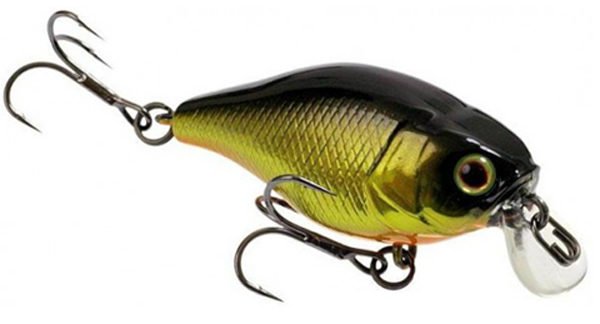
Wobblers are considered the most popular among artificial baits.
When and where to catch chub with a regular fishing rod
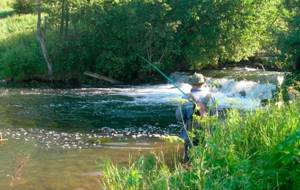
You can catch it from the moment the ice melts from the river until late autumn. The chub bites throughout the day, from early morning until sunset, as well as at night. The chub is most active early in the morning and late in the evening, when the heat subsides. At night you can catch a trophy specimen, since during this period a large chub goes out to “hunt”.
Chub, like most other fish species, is very sensitive to weather changes, and especially pressure changes. If you do not take this fact into account and go fishing on unstable days, then this fishing may turn out to be a waste of time. Chub are caught when the weather is stable for several days, without obvious changes in temperature and pressure. The chub is less careful during periods when light ripples appear on the water. Therefore, a small breeze can lead to successful fishing, unlike a strong wind, then the fish bite may stop altogether. When the water is clear, this fish feels wary and moves away from the shore when fishermen or extraneous noise appears on it.
The chub loves places where there are riffles and fast currents. When the water temperature drops, it goes to deeper places where the current is not so fast. Can be found in the shade or under the canopy of plants hanging over the water. As a rule, various insects fall into the water from them, which he eats with pleasure. If these are fruit trees, then he can easily taste the fruits of this tree, especially if they are cherry fruits. He never passes by whirlpools into which various spiders, worms, etc. can be sucked. It can be found in sections of the river where mud plays in the water like strands of hair in the wind. Moreover, such places stretch for tens of meters. It can also be found at the boundaries of fast and slow currents, as well as in places where huge boulders peek out of the water, as if cutting through the current. It is behind such boulders that the chub may be located.
If you have some experience in finding chub anchorages, then you can go fishing. It should be taken into account that the places where this fish accumulates depend on the seasons. In the spring, when the water has not yet warmed up, the chub stays closer to the bottom or at half-water. At the same time, it can be found in the area of rifts, where it actively feeds.
Closer to summer, when the upper layers of water are actually warmed up, it rises closer to the surface, where it begins to feed on insects that have fallen into the water. The chub will go to the depths only with the arrival of autumn, when the water temperature begins to drop, and there are no longer food items on the surface of the water. At the same time, the chub’s bite does not stop, but even intensifies, as it senses the coming of winter. If the autumn is warm, then it can peck until November, when real cold is already on the doorstep.
In the autumn, chub can be caught from the depths using bottom tackle. Even on warm, sunny days it remains at depth, in holes, although it can sometimes be seen on sandbanks.
Parking places and fishing times
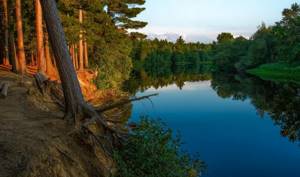
The chub sticks to rifts, edges, holes and other shelters. But the place should shelter the flock not only from large predators, but also from the current. Look at areas of the reservoir where a fast current is adjacent to a slow current. There is a possibility that this fish is standing here. In addition, you need to pay attention to the places where its tributaries flow into a large body of water. Usually the chub waits in such places for prey brought by the inflow.
You can go fishing immediately after spawning ends. On average, spawning ends in the second ten days of April. But this time may vary depending on the weather or specific area. After spawning, the fish actively feeds. In the summer there is a certain lull, although the vast majority of anglers catch chub at this time. At this time, all types of gear that are used to catch this fast fish work. Autumn is a golden time for fisherman. Since during this period the chub, preparing for the difficult winter time, actively feeds and does not let a single bait pass by.
Recommended reading: Common roach
It is better to catch chub in the morning and evening dawn. Here he is no different from any other fish. It is in the morning and evening that the highest activity is observed. But if fishing is carried out at the surface of the water, then you can fish even at noon. This statement is especially relevant in the case of catching chub using a tackle with a water ball. During the day, the chub simply basks in the rays of the sun on the surface of the water, but it will also never miss a bait floating by.
At night it is best to catch trophy chub. You can use either a float rod with a firefly or strong bottom tackle. A pleasant bonus of night fishing is that at night a catfish or large carp can easily bite.
What do you use to catch chub?

The chub is a semi-predatory fish, so it is caught using various baits of animal and plant origin. At the same time, there are seasonal approaches to the use of certain baits. In the spring, the most effective bait may be the cockchafer, since it is included in the daily diet of this fish. When the cockchafer begins to become active, quite a lot of it ends up in the water, for one reason or another. When the cockchafer flies out, the chub may completely refuse other food, especially that offered by the fisherman. Fishing can be most productive if you catch chub using a cockchafer.
Until the moment when the cockchafer flies out, the chub is caught using other, well-known baits. The following baits may be most effective:
- Any type of worm.
- Maggot.
- Bloodworm.
- May beetle larva.
- Small fish.
- Barley shell (meat).
- Cancer cervix.
- Bread crust.
- Dough of any origin.
As soon as the cockchafer appears, you should immediately reorient yourself to this effective bait. There are so many chafers that getting them during this period is not particularly difficult; just hit a small tree and they will simply fall on your head. They are collected in a box and sent out for fishing.
The flight of the cockchafer lasts about 2 weeks, after which it is necessary to look for a replacement. In the summer, various caterpillars begin to appear, which can easily replace the May beetle. In addition to caterpillars, grasshoppers are also suitable and can be used throughout the summer. The grasshopper holds the hook perfectly, so there will be no problems with casting, even over long distances. Caterpillars and grasshoppers are used when catching chub directly from the surface of the water.
With the onset of autumn, when the water begins to cool, the chub goes deeper and stays at a depth of half a meter from the bottom. Therefore, during this period it is better to use bottom gear. The feeder is becoming increasingly popular among anglers. This is a bottom fishing rod, equipped with a modern rod and a special feeder, which also serves as a sinker. A grasshopper or caterpillar, if available, is suitable as bait. In addition to them, other baits that were used to catch it in the spring are also suitable. A large chub catches a small frog very well. A small chub will not bite a frog, but a large, trophy specimen will definitely.
There is another interesting bait that the chub will not swim past without becoming interested in it. It turns out that the chub is a cheese lover. The cheese can be cut into cubes comparable to the size of the hook. After this, the cheese cubes are placed on a hook and thrown into the water.
in spring
In the spring, when the water clears, you can start fishing with float tackle.
The nozzle is:
- a bunch of several red dung worms
- maggot
- cockroach
- large crawling earthworm
Places for fishing are chosen with a moderate current, a sandy and pebble bottom, and with depths of one and a half to three meters . Excellent results are obtained by fishing near a washed-out shore with a reverse and circular current, near flooded bushes and trees. Most fishing is done by retrieving, but you can also try swimming by slowly walking downstream. The gear for such fishing is selected to be durable, with a long (up to five meters) rod.
On the Maybug
An excellent bait for chub is the cockchafer during its mass emergence. When fishing for the cockchafer, fly fishing gear is used. Fishing is done in riffles, in creeks, and in fast currents. The beetle begins to float freely with the flow.
The gear selected is either special fly fishing or regular (main line 0.35-0.6 mm, leash 0.25-0.35 mm, single hook No. 9-11 or small tee). The float is not installed. For better casting, just above the hook you can place a light weight in the form of a single pellet, but so that it does not drown the bait.
Small beetles are planted in twos, slightly releasing the hook sting from the abdomen - this will allow you to effectively hook the fish when biting at a long distance. Large chafers are planted one at a time, tearing off their hard wing covers.
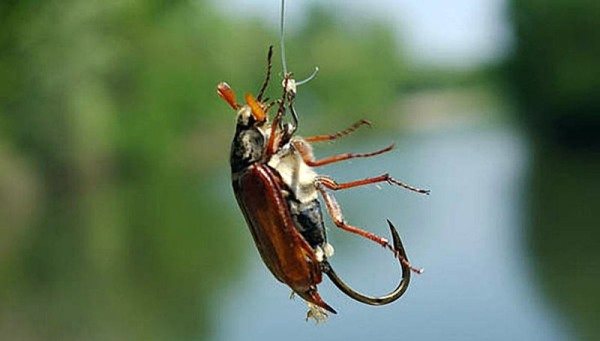
When catching a cockchafer, hooking has its own peculiarities. Thus, a sharp hook immediately after a chub bite may not bring results - the fish will not be hooked well and will most likely come off the hook, or even the bait will be pulled out of the chub’s mouth during an instant hook.
The point is to allow the chub to securely take the bait - therefore, after the bite, move the rod towards the outgoing line. If the bite is sharp and the bait goes away quickly, you can even slightly release the line from the reel. Then, having chosen a free line, after 3-4 seconds they perform a strong and sharp hook. The tackle must be strong enough to withstand the simultaneous hooking and oncoming jerk of a strong fish.
You can try fishing with a cockchafer from the bottom. After threading the beetle onto a hook, its elytra are opened and the hard side is bent outward, making something like a propeller. The mounted beetle is thrown into a place with different currents (near whirlpools, behind rifts, behind underwater obstacles, etc.). The bait, falling into the bottom layers, begins to tumble and turn over under the influence of the current, provoking the chub to bite.
Other attachments
Also in the spring, various caterpillars and larvae are used to catch chub. The best results come from catching the caterpillars of a night butterfly that lives on poplars . The larva of the May beetle enters perfectly.
Float tackle for chub

The chub is a fairly cautious fish, which means using lines that are not thick or not noticeable in the water. Recently, fishing enthusiasts have begun to prefer fluorocarbon. It is not so noticeable in the water, but it has its disadvantages. It is not as flexible as monofilament line or braided cord. In addition, it has less strength.
If you use a regular fishing line with a diameter of more than 0.25 mm, the number of bites can be significantly reduced. The thickness of the leash should be even less and be within 0.2 mm. It is better to use branded reliable fishing lines with good load capacity, since a large specimen can bite, and you will not be able to pull it ashore without problems. Hooks are used numbers No. 7 or No. 8, with a short shank. The sinker should be located at a distance of no more than 10-15 cm from the hook. A rod at least 3.5 m long with a reel, so that the bait can be released into free swimming when catching chub from the surface. This method of fishing, using baits such as cockchafers, various caterpillars, and grasshoppers, makes fishing more effective than fishing in one place in the water column.
Fishing with a water ball

All the main elements of gear for catching chub using a tackle with a water ball are the same as in the case of float fishing. The difference lies directly in the equipment itself. Instead of a float, a water ball (water-filling float) is tied to the fishing line. A water balloon is a special transparent float with two valves. Using the first valve, you can draw water inside the ball, and using the second valve, the angler can drain this water. It is through these valves that the weight of the water ball is regulated.
It is especially worth noting that the water balloon is made of transparent material. Most often this material is plastic. Sometimes there are also water balloons made of glass. The leash can go either before or after the water ball. In any case, the water ball is always on the surface of the water. The bait will also be located here.
Recommended reading: Bream fishing in autumn
In the case of a water ball, it is better to use thin wire hooks. After all, such hooks will not drag the bait into the depths. When fishing with a water ball, it is wise to use insects as bait, which are the natural food of the chub at a particular time. The cockchafer, grasshopper, locust, dragonfly and other insects perform best in this role. Before fishing, fishing enthusiasts pay attention to the shores of the reservoir and the insects that are found here. These same insects probably constantly fall into the water and become prey for the chub. So try catching a couple of insects and fishing with them.
A regular float rig can also be used to create something similar to a water balloon rig. In this case, the weights are simply removed from the equipment. The float takes a lying position. Now put the same insect on the hook and move the bait as if fishing with a water ball. Do not place a float with bright colors, as such colors will likely scare away shy fish. But a black or green float will not arouse suspicion among the chub. You can even remove the float and replace it with a simple twig. A small branch will look natural on the water surface and the chub will not suspect a trick.
The disadvantage of using a conventional float as a water balloon is that it is impossible to regulate its weight. The float is light, and therefore it is simply impossible to make a long cast. So there are no full-fledged analogues to the water balloon. By the way, a bread crust would be an excellent bait for catching chub on a water ball. When fishing like this, you also catch crucian carp, carp, roach and bream.
Choosing a float for chub

When choosing a float for chub, you should remember that this is a cautious and timid fish that does not tolerate bright colors. This means using subtle float designs that won't alert the fish. You should choose floats that can imitate objects floating on the surface of the water in black, brown or neutral colors. Floats of the “goose feather” type without coloring or floats - bulbs that resemble air bubbles floating on the surface of the water are perfect.
Lures
The chub is an omnivorous fish. Its natural diet includes a wide variety of food - from algae to fry. Throughout the summer, it actively collects insects from the surface of the water and responds well to the cockchafer.
The best plant baits for catching it with a fishing rod are:
- steamed grains;
- bread;
- dough;
- boiled potatoes;
- filamentous algae (tinka);
- berries.
Animal baits you can use are:
- insect larvae - maggot, bark beetle larva, and so on;
- the insects themselves - flies, beetles, dragonflies;
- worm;
- processed cheese;
- leech;
- shell meat;
- crayfish meat;
- chicken intestines;
- raw or boiled liver;
- cutting fish;
- tadpole or frog;
- fry
Expert opinion
Vladimir Poltoranin
Fisherman - expert
Due to the diversity of chub's food preferences, catching it with a fishing rod is not an easy task. It can be difficult to predict which baits the fish will prefer on a given fishing day.
Therefore, every time you go to a pond, it is better to take with you as many different baits and attachments as possible so that you can try them all and choose the ones that are most attractive to the fish.
Moreover, the colder the water, the better animal baits work. The optimal bait for chub in the summer on a float rod for fishing in calm water will most likely be of plant origin.
Chub bites
Sometimes it is quite difficult to distinguish chub bites from bites of other fish species. This is also due to the fact that in different bodies of water it bites differently, which indicates the peculiarities of its diet. But, as a rule, the chub’s bites are quite sharp, since it is used to grabbing everything on the move, especially insect larvae that have fallen into the water. About the same time he grabs the bait on the hook. Basically, the bites are quite sharp and unexpected, so you must always be careful not to miss the moment of the bite. If the moment of the bite is missed and the hook is not carried out on time, then the chub will most likely leave with the bait, and the fisherman will pull out the bare hook. Due to the fact that the weight of the sinker is quite small, you should not hope for the fish to hook itself. Self-hooking of a chub is possible when catching it on a feeder, when using feeders weighing about 100 g.
Selecting a location
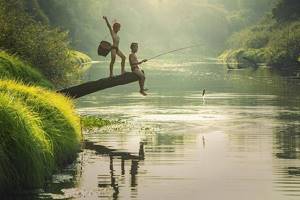
You should look for chub in small and medium-sized rivers with clean water. It can also be found in large bodies of water, but finding its feeding areas here is not easy. This fish prefers areas with a hard clay-rocky or sandy bottom.
Chub loves fast-flowing water, which has a lot of oxygen. You should not look for it in areas where the flow slows down greatly, and the water becomes musty due to dying algae, or in bays.
Promising places for catching chub with a fishing rod will be:
- riffles;
- areas under cliffs from which the wind blows insects into the water;
- areas under trees and bushes hanging over the water;
- places under bridges, near piles;
- rapid jets of water near dams.
Bait for chub

In order for the fishing results to be significant, it is better to take care of bait that may interest the chub. Here you can use ready-made store-bought mixtures or limit yourself to homemade bait. Oddly enough, you can bait a chub with regular bread. To do this, the bread is placed in a fine mesh net, after which the net is tied like a knot and thrown into the water on a long rope. Considering that the chub is a carp species, you can interest it with the same formulations as for carp.
You can learn about the compositions and methods of preparing such baits here.
Lure for chub
The bait for chub, as for any other fish, must first of all be tasty and nutritious for the fish. She does not have the task of quickly bringing the fish to this place. Its task is to show the fish that food can always be found in this place. Therefore, there is no need to add flavors, strong-smelling elements, etc. to its composition. Simply boil some peas and pour them into a chosen location every few days.
To bait chub, you can use the following components:
- boiled/steamed peas;
- boiled corn;
- cake;
- cake;
- bread;
- pearl barley;
- maggot;
- bloodworm;
- worms;
- various boiled porridges.
Chub spawning
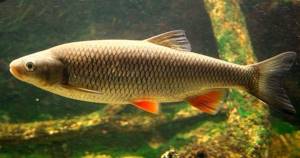
Depending on the region, chub spawning begins in April and continues until the beginning of June. The beginning of spawning of this fish can be determined by the beginning of bird cherry flowering. Oddly enough, many fish refuse to feed during spawning, but the chub continues to actively feed, so during this period you can count on a good catch. It should be taken into account that during spawning, fishing for many types of fish, including chub, is prohibited. In any case, you need to know when to stop, otherwise, in the near future you may be left without fish at all.
In the third year of life, this fish is ready to reproduce. The spawning process begins with the water warming up to +10-15°C. He chooses places with a rocky and pebble bottom. At the same time, large individuals prefer to lay eggs in deeper places, and smaller individuals prefer to lay eggs in shallows or shallow riffles.
Chub caviar is not large in size, reminiscent of poppy seeds, but orange in color. Each female can lay up to a million eggs. At the same time, the number of chub in reservoirs, compared to roach, crucian carp and other fish, remains small. This is due to the fact that the eggs are carried by a fast current without being fertilized. The rest is destroyed by ubiquitous predators such as perch, pike, etc.
Features of fishing at different times of the year
Spring
Immediately after the ice melts, in March or April, the chub does not show much activity. It is difficult to find it in the reservoir at this time, and the chances of a good catch are low. The situation improves closer to summer, after the water warms up - in April - May.
You can find fish at this time both in the depths where it spent the winter, and in shallow waters well warmed by the sun, where the chub looks for a lot of food in the spring.
In April - May in most regions this fish spawns. In time it coincides with the flowering of bird cherry. During the spawning period, the chub, unlike other fish, continues to feed and fall for the bait.
But when going fishing, you must take into account that in the spring spawning bans are introduced, which vary from region to region. You should follow them, treat the fish with care and allow it to spawn in peace.
Summer
Summer is the best period for chub hunting. The fish are active at this time and bite well on a fishing rod with a float. This is especially true for June and August. In July, the activity of the chub, like any other fish, decreases.
In summer, this fish feeds mainly on insect larvae, the insects themselves, as well as algae covering driftwood. Fishing near the surface, both in the coastal zone and at depth, brings good results in June and August.
In the middle of the summer season, when the air and water temperatures rise, the fish become capricious. Figuring out how to fish for chub in the summer and still have a good catch can be challenging. At this time, you need to look for the bighead in the current and at depth, where it is cooler.
Another important question is what is the best way to catch chub in June, July, and August. At this time, you can get good results using green filamentous algae (teena). Other options are other plant baits and insects that need to be floated across the surface.
Autumn
In autumn, when the water becomes colder, the chub switches to animal food. Large specimens feed on fry at this time, and they can be successfully caught using a live bait rod. Smaller chub respond to animal baits placed on the hook of a regular float rod. You need to look for fish further from the shore, at depth.
Winter
In winter, the chub stands in holes far from the shore, where it hibernates until spring. But in some reservoirs, especially in the south, it continues to feed even after freeze-up. In such a situation, it can be caught with a winter fishing rod, float or jig.
In this case, you need to look for it at depth. On reservoirs that do not freeze in winter, you can hunt for chub using a summer float rod. At this time, you need to catch it at the bottom using animal baits.
Basic fishing methods
The methods of catching fish directly depend on how difficult it is to catch. If the fish is easy to catch, then the methods are limited to one, maximum two options. The chub is one of the hard-to-reach fish, which means that there are countless ways to catch it.
The most common methods include the following:
- Fishing with bait (the bait is usually grasshoppers, dragonflies, butterflies, worms, bloodworms, dough, bread, chafer). Fishing is done with a float or fly fishing rod, with a rod no shorter than 4-6 meters long.
- Spinning baits (spinners, spinners with a petal are especially popular in places where the current is too fast).
- Bottom tackle (well suited for rivers with fast or medium flow).
- Float fishing rod (especially good in combination with bait made from cherries, chicken giblets, cheese, suitable for slow currents).
Spinning
As the chub grows, its taste preferences also change. The older and larger the fish, the more predatory it becomes. If earlier, weighing about 200 grams, the chub ate only small fry, now, as an adult, having gained strength, it eats medium-sized fish, fairly large insects (dragonflies, grasshoppers, chafers).
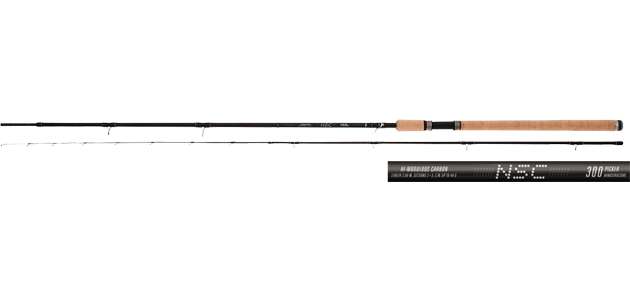
In such cases, spinning is the best choice. As a rule, such a device for water hunting is used when the current in the river is very strong. You need to choose a spinning rod with a rod so that it does not bend from water pressure. For bait, spinners, spoons, mini-wobblers and micro-jigs are used.
You should not choose bait colors that are too bright; it is better if it is a light green, yellow or black bait. It is important to take into account the fact that spinning rods are used to catch fish located at a depth not exceeding one and a half meters. Hooking a caught fish should be done slowly and smoothly, without fear that the fish will leave, since this happens extremely rarely.
You should raise your head above the water as soon as possible so that the fish gasps for air and calms down a little, then this will not threaten to break the spinning rod.
Float tackle
You can successfully catch it with float tackle at all times of the year, except for the winter period, when the chub ceases to be interested in food. Catching chub with such a device is one of the most common methods among beginners and professionals. Float tackle is an ordinary fishing rod, which is a fly rod.

Usually they choose a fishing rod no more than 5 meters long with a fishing line diameter of no more than 0.2 millimeters; the length of the rod depends on the place where they are going to fish. The success of fishing with a fishing rod increases if the depth of the river is at least one and a half meters, and the river flow is reversed. Insects, vegetation, and combinations work well as bait.
It is better to choose bait, taking into account the time of year; seasonal bait attracts it faster.
Feeder or picker
To catch chub in the fall, use a feeder and picker gear. Their advantages are that their top is more flexible, can very quickly signal the angler about a bite, these tops can be changed. The feeder and the speaker differ in the length of the rod; the picker has a length of no more than 3 meters, and the feeder has a length of more than 3 meters.
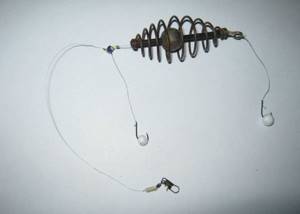
To catch chub, it is important to choose the right hook; it should be as sharp as possible, especially if you have to fish in a river with a rocky bottom. The type of hook also depends on what the bait will be, for bait of animal origin - as thin as possible, for bait of vegetable origin - thicker. The fishing also depends on the shape of the hook; the most successful choice will be a hook with a round hook.
Donka
Donka for fishing is usually used when fishing needs to be done from the bottom and the river has a fast current. Donka is not suitable for quiet rivers, as the fishing line sags. Donka is different from other gear
the absence of a float and the ability to cast the line as far as possible, this is very convenient, because in such cases the fish does not see the person.
The chub is a fairly large fish, which means donka is the most successful solution for it. Most often, donka is used to catch chub in the summer, when the fish are active.
Peculiarities of biting by season
The most favorable season for fishing is summer, since it is at this time that it is most active.
However, modern fishing devices allow you to fish not only in summer, but also in other seasons, including winter:
- Fishing in the spring can bring great success, as it becomes the most active at this time. From the end of April to the very beginning of June, the fish prepares for spawning and spends most of the day on the surface of the water in search of food. The best time to bite will be early in the morning or late in the evening. In the spring, to “catch” chubs, they use a spinning rod, a donka , a fishing rod with bait made from dough, bread and May beetle larvae.
- Fishing in summer. Summer, especially July and August, is the most favorable time for fishing. It is during these months that he is closest to humans - in the upper layer of river water. It leaves the bottom and rises to feed on insects falling into the water. A float rod, a fly rod and a spinning rod with baits of grasshopper (especially the favorite “dish” of chub), flies, dragonflies, and butterflies are ideal as fishing gear.
- Fishing in the fall. The autumn period is also favorable for fishing. From the very beginning of September to the beginning of November, due to a decrease in water and air temperatures, it goes deeper under water. There is no point in going fishing too early; you should wait until the water warms up a little, around 10 am. You can fish in the fall using a float rod with bait made from dough, bread, a caterpillar, a grasshopper, a spinning rod with a reel, a bottom with a frog, a fry and a worm.
- Fishing in winter. Winter is not a reason to give up the pleasure of fishing. The first ice does not scare away the chub, and at this time it is quite active. Good fishing is guaranteed only if there is no thick layer of ice on the surface of the water and the weather is warm and frost-free. In severe frosts, fishing does not make any sense due to the fact that the chub is not interested in food, but becomes inactive and lies on the bottom. In winter, fishing could not be better if you use a float rod with bait from a worm, raw liver, fry, and bloodworms. If there is no ice on the river, then you can fish until the end of January; from the beginning of February to the end of March, he ceases to lead an active lifestyle and is interested in food.
